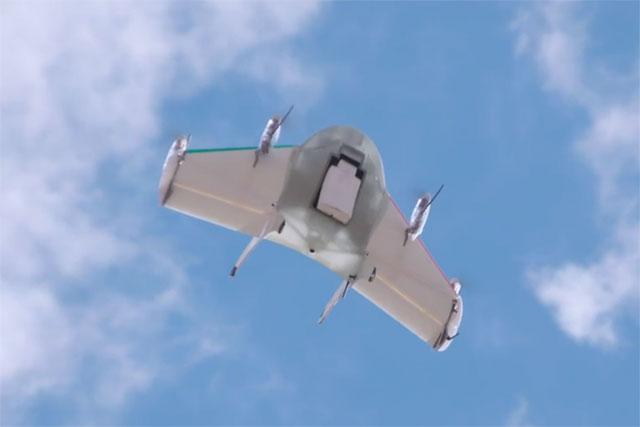You are here
GoogleX takes to skies with secret drone project
Sep 15,2014 - Last updated at Sep 15,2014

By Marco della Cava
USA Today (MCT)
SAN FRANCISCO — The drone wars have officially begun.
Once the exclusive domain of DIYers passionate about buzzing parks and neighbours, tech titans are entering the fray with serious financial and grey-matter resources. Late last year, Amazon’s Jeff Bezos showed off his company’s drone delivery prototypes, and now Google reveals it has been secretly testing its own drones in Australian cattle country.
Dubbed Project Wing, the three-year mission successfully completed its first delivery August 13, a bundle of Cherry Ripe chocolate bars. Over subsequent days, the team from GoogleX — the Mountain View, California-based search company’s exploratory technology arm — air-dropped a range of other farmer-friendly goods, from medicines to first-aid kits.
The flights were a direct response to GoogleX lead and Google co-founder Sergey Brin, who challenged his team to make a delivery to a real person via drone.
“We selected these items based on several conversations with local people about how aerial delivery might help them in their jobs,” GoogleX said in a recent release. “Over the course of the week, the team ran more than 30 successful delivery flights. We are now back in California reviewing what we’ve learned.”
Delivery by drone remains the stuff of the future, in part due to pending Federal Aviation Administration regulations regarding such unmanned flights. There’s also the simple matter of people getting used to oversize mechanical mosquitoes buzzing around. But for some drone industry observers, it’s a matter of when not if.
“Google’s announcement of its planned UAS (unmanned aircraft systems) delivery service further demonstrates [its] potential,” says Michael Toscano, president and CEO of the Association for Unmanned Vehicle Systems International. The technology promises “to revolutionise industries... whether it is helping farmers survey their fields, search for lost hikers or filming Hollywood movies, UAVs are capable of saving time, money and most importantly, lives.”
GoogleX, perhaps best known for its self-driving car project, is calling Project Wing a self-flying vehicle. Headed by Nick Roy of the Massachusetts Institute of Technology’s Aeronautics & Astronautics department, the project took flight in earnest in July 2012. A hybrid approach was deemed best, with wings for fast forward flight, and four rotors for vertical take-off and landing. In a drawing provided by Google, the package is seen nestled inside the plane’s body, and is lowered by a chain from heights of 35 to 50 metres.
The next two years were then spent refining the prototype before heading to a ranch 160 kilometres inland from Brisbane. The site was chosen, according to Google, for its “rolling hills, open sky and long-standing history of innovation with UAVs. Out in the countryside, the temperature varies drastically by time of day, winds shift by the second, and weather rolls in unexpectedly.”
Although bullish on its progress, Google says consumers shouldn’t expect drone deliveries for years. The reasons include complexity (“These planes have much more in common with (our) self-driving cars than the remote-controlled airplanes people fly in parks”), sophistication (“They will fly a preprogrammed route with just the push of a button”), and variety (“Over time, what you want to deliver and where and why will determine what vehicle you want to use”).
In the coming months, GoogleX’s Project Wing team will drill down deeper on reducing the noise of its drones, improving the precision of its flights and delivery targets (“to the size of a doorstep”), and making sure its self-flying vehicles are able to see and avoid each other while in flight.
Related Articles
Fully computerised unmanned vehicles are around the corner. On the ground or in the air, we will soon be carried by such cars or aircrafts.
French auto parts maker Valeo plans to draw on drone software and other military technologies from partner Safran to offer self-driving vehicle platforms to carmakers by the end of the decade.
SAN FRANCISCO — Google parent Alphabet on Tuesday announced that it has partnered with Fiat Chrysler in a major expansion of its fleet
















